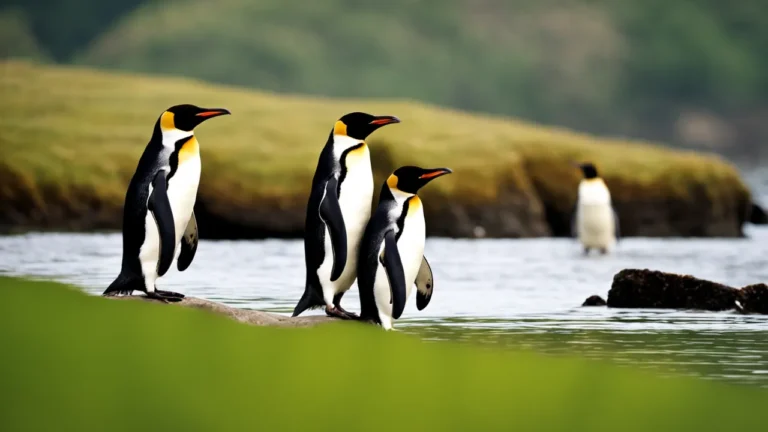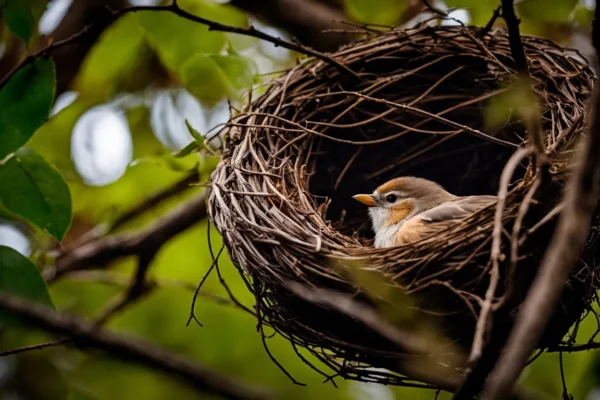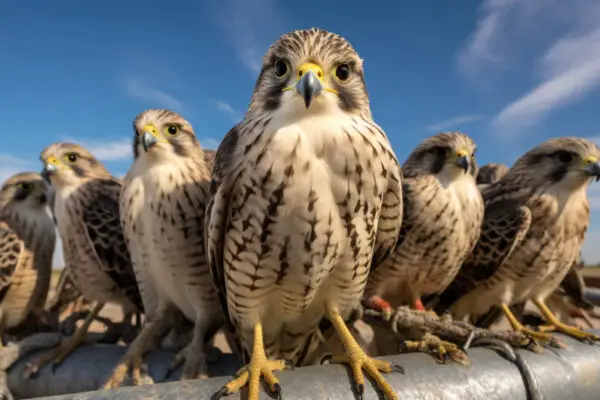It’s simple to confuse penguins for fish due to their fluid swimming, aquatic lifestyle, and flippers. But in actuality, these tuxedoed seabirds are members of a completely distinct taxonomic class than fish.
This is a simple response in case you’re pressed for time: Penguins are fish, not fish at all. They vary greatly from the qualities that distinguish fish from other animals, but they have all the key attributes that characterize bird species.
We’ll examine the essential characteristics that categorically place penguins in the bird family in this extensive post. As we contrast the anatomy, reproduction, habitat, and behavior of penguins with those of fish, you’ll discover some interesting facts about penguins.
Birds and Penguins Both Have
Penguins and other birds share some important characteristics, even though penguins have several unique adaptations to their aquatic habitat. Despite their ability to swim and live in the water, penguins are nonetheless classified as birds because of these common traits.
feathers
The most noticeable feature that gives penguins their bird-like appearance is their feathers. Most bird species depend on their feathers for flying, but penguins have evolved to use their feathers for swimming. The penguins’ waterproof layer, made of tightly packed feathers that overlap one another, keeps them warm and afloat in the icy seas they live in.
A beak
Their beaks are another feature that penguins and birds have in common. The beaks of penguins are made especially for grasping onto slick food, such as fish and squid. All penguins have beaks that are ideal for their requirements while hunting, albeit the size and form of each species’ beaks vary according to food.
A pair of wings
Penguins have wings that are essential to their survival even though they are not used for flight. Penguins can move remarkably quickly underwater because to the development of their specialized flippers from their original wings.
Similar to how flying birds use their wings to soar through the air, penguins use their flippers to give them with the required propulsion to swim and dive in search of food.
voids in bones
Penguins have hollow bones, much as other birds. They can swim and dive more easily because to this adaptation, which also helps them lose weight overall. In addition to providing structural support, hollow bones provide effective oxygen circulation, which is critical for penguins’ capacity for diving and endurance.
Lay Eggs
The capacity to lay eggs is one of the characteristics that set birds, especially penguins, apart. Penguins lay eggs to breed, just as all other birds do. A single egg laid by the female penguin is subsequently raised by both parents until it hatches.
This parental concern is another trait that many bird species have in common.
Non Fish Characteristics: Penguins Have No Scales or Gills
The existence of gills and scales is one of the main traits that set fish apart from other animals. Penguins use their lungs to breathe, whereas fish use their gills to get oxygen from the water. Unlike fish, penguins lack scales and instead have feathers that assist them stay warm and glide across the water.
Penguins cannot spend their whole lives underwater, like fish, without gills and scales.
Never Lay Eggs in Water
Penguins do not deposit their eggs in the water as fish do. Since most fish are oviparous, their eggs are laid in water, where they grow into adulthood. Conversely, penguins are birds that deposit their eggs on land.
To shield their eggs from predators and inclement weather, they construct nests out of rocks, pebbles, or grass. There is an obvious difference between fish and penguins.
Not Able to Breathe in Water
Penguins are unable to breathe underwater, whereas fish can get oxygen from the water via their gills. Because they are aquatic creatures, penguins must surface to breathe. They must come to the surface to breathe in new air, but they have evolved to holding their breath for long stretches of time while diving to capture fish.
Penguins are not fish, as further shown by the basic differences between their respiratory systems.
Young and Only Terrestrial
One additional characteristic that distinguishes penguins from fish is the way they raise their young. Normally, fish lay eggs and let them hatch and grow on their own. Penguins, on the other hand, are very engaged parents.
Until the young are mature enough to fend for themselves, the male and female penguins alternately incubate the eggs and tend to the young. This nursing behavior is unique to birds; fish do not exhibit it.
Penguins’ Streamlined Bodies and Adaptations for Aquatic Life
Penguins have evolved streamlined bodies as a means of adapting to their watery existence. Because of the torpedo-like form of their body, they can travel through the water with little resistance. They can swim more quickly and effectively because to their streamlined form, which enables them to elude predators and capture prey.
Swimming flippers
Flippers are one of the most important swimming adaptations for penguins. These flippers resemble paddle-like structures due to their modification from wings. Because of their strength and flexibility, penguins can move through the water with remarkable agility.
Penguins are great swimmers because they can move forward with the help of their flippers.
Rich Bones for Scuba Diving
Because of their reputation for diving, penguins have developed thick bones as a means of adaptation. Penguins have solid bones as opposed to hollow ones, like most other birds. They can dive deeply into the water thanks to this adaption, which shields them from the damaging effects of pressure fluctuations.
They can also maintain greater buoyancy control thanks to their thick bones, which enable them to submerge for longer periods of time.
Waterproof feathers
Because they spend so much time in the water, waterproof feathers are essential for penguins. Their feathers are tightly packed and have a unique oil coating that makes them water-resistant. This adaptation aids in maintaining their buoyancy, protecting them from the cold water, and keeping their bodies dry.
In addition to being waterproof, the feathers provide superior insulation, keeping penguins comfortable in the icy seas of Antarctica.
Order of Taxonomy for Penguins: Sphenisciformes
Penguins are members of the order Sphenisciformes, which includes all birds without wings. The only animals in this group are penguins, which are distinguished by their special adaptations for aquatic life. Penguins are well-insulated in cold water because to their thick feathers, streamlined bodies, and wings that resemble flippers.
The Spheniscidae family
Penguins are members of the family Spheniscidae under the order Sphenisciformes. All extant species of penguins, most of which are located in the Southern Hemisphere, belong to this family. Because of their exceptional adaptation to the sea, penguins spend a large part of their lives underwater, where they hunt fish and other aquatic life.
The quantity of species
There are eighteen identified species of penguins worldwide. The Emperor Penguin, which can grow to a height of 4 feet (1.2 meters) and weigh up to 100 pounds (45 kilograms), and the Little Blue Penguin, which is little over a foot (30 cm) tall and weighs around 2.2 pounds (1 kilogram) are the two species that differ in size.
Among the most well-known species are the Chinstrap, Gentoo, and Adélie penguins. Every species has distinct traits and adaptations that enable them to flourish in their particular environments.
Visit the BirdLife International website for additional information on penguin taxonomy, which includes comprehensive details on bird categorization and conservation initiatives.
Interesting Penguin Information
Fossil Record of Penguins
The history of penguins is intriguing and goes back millions of years. The oldest fossilized penguins yet discovered were discovered in New Zealand and are thought to be 61 million years old. Penguins have been on Earth for a very long time, as shown by these fossils.
The thought of how these unusual organisms have changed and developed over such a long time is astounding.
Distinctive Actions
Penguins are distinguished from other birds by their distinctive habits. Among their most amazing habits is their amazing agility while diving and swimming. Because they can swim so well, penguins may achieve underwater speeds of up to 20 miles per hour.
They seem to be flying over the ocean because they use their wings as flippers to go about in the water.
Penguin social interactions are another fascinating characteristic. They are gregarious creatures that reside in enormous colonies. They use a variety of vocalizations, body language, and displays to communicate.
They are able to create and maintain their social structure inside the colony because to these interactions. Seeing how these actions aid in their survival and general well-being is quite intriguing.
Status of the Population
Depending on the species, penguin populations have different conditions. Certain species, such as the Emperor Penguin, are thought to maintain stable populations. There are some species, however, that are seriously threatened.
Several significant problems impacting penguin populations include habitat deterioration, pollution, overfishing, and climate change.
The International Union for Conservation of Nature (IUCN) has designated a number of penguin species as endangered or vulnerable. For instance, in the last 30 years, the number of African penguins has decreased by about 60%, mostly as a result of habitat loss and a fall in their primary food supply.
To preserve these incredible animals and guarantee their continued existence for future generations, conservation initiatives are essential.
The World Wildlife Fund website has further information on penguins and conservation efforts. They provide insightful information on the condition of penguin populations now and the initiatives being taken to save them.
Final Thoughts
Although they may seem to be similar to fish on the surface, penguins are really birds with unique reproductive, anatomical, and behavioral traits. Their remarkable ability to swim demonstrates how evolution has adapted them to live in aquatic settings.
The next time you see penguins diving elegantly for prey, you may tell others with confidence that they are a distinct branch of the bird world that is devoted to aquatic existence.


![Hawks vs Falcons [Everything you need to know]](https://birdsology.com/wp-content/uploads/2023/06/47-600x400.jpg)



